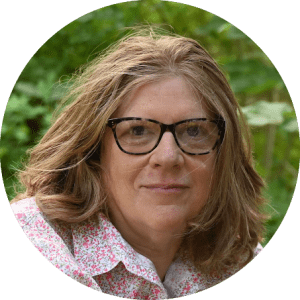
Dr. Terryanne Maenza-Gmelch, PhD
Senior Lecturer in Environmental Science at Barnard College
Dr. Maenza-Gmelch teaches courses in Environmental Science at Barnard College; the course typically enrolls around 120 undergraduates, and consists of an in-person lecture course coordinated with seven sections of weekly lab courses. Prior to the shift to remote teaching in Spring 2020, the lecture and associated labs were offered as hands-on, inquiry-based, and field experiences. With the remote pivot, Dr. Menza-Gmelch had to rethink what this structure could look like with students attending from across the globe. She met the moment by leveraging students’ local and personal experiences. Read on to learn more about what Dr. Maenza-Gmelch did in her course, what lessons and experiences she’s carrying forward, and the advice she has for other instructors at Columbia. To hear more about Dr. Maenza-Gmelch’s innovations, watch her Promoting Student Inquiry in Science and Engineering Lab Courses panel presentation.
Leverage Students’ Local and Personal Experiences
In this course, we examine the basic principles of environmental science using current local and global environmental news as case studies so that students learn the science behind environmental issues. Topics range from climate change, biodiversity, ecosystems, water resources, environmental justice, pollution and energy to sustainability. Because of our location, the lab curriculum typically features studies of the Hudson River and its forested shorelines and the campus and other neighborhood green spaces. When we were remote during the pandemic, students were attending from Israel, Los Angeles, Brooklyn, New Jersey, Germany, Italy to Cambodia and Singapore with places in between. I wanted to retain our practice of using local green spaces to apply our class concepts and collect data. At first I thought that the widespread distribution of students around the globe was a hindrance but, in actuality, it was a great opportunity for students to explore their local green spaces and experiences as a focus for remote learning of environmental science, and to share their explorations with the class.
Having students explore their local green spaces and resources allowed for sharing of students’ first-hand local observations and provided an authentic global perspective for the entire class. It is well established pedagogy that students can learn more meaningfully when they can connect course topics to personal experiences. I have retained the idea of having students explore or reference their home green spaces by incorporating that into the in-person course’s final exam. I will continue with application of concepts to personal experiences and local resources – it is an effective way to increase engagement in a large environmental science course for non-majors/potential majors.
Dr. Maenza-Gmelch shares her course innovations.
Advice for Instructors and the Future of Teaching at Columbia
Encourage students to make personal connections.
Always ask students to connect the class topic to their hometown or state: “what do you see in your own neighborhood?” Most students like to share this with the class. I had students send me postcards from their hometowns, which I shared weekly with the class. They also were required to share sixty-second videos of their study sites with their lab sections. This focus on class community building is important for collaborations, learning, and enjoyment.